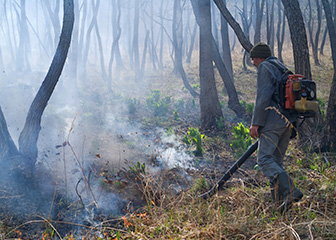Summary

| Quick Facts: Forest and Conservation Workers | |
|---|---|
|
$23,900 per year
$11.49 per hour |
|
| High school diploma or equivalent | |
| None | |
| Moderate-term on-the-job training | |
| 13,700 | |
| 1% (Little or no change) | |
| 100 | |
What Forest and Conservation Workers Do
Forest and conservation workers measure and improve the quality of forests. Under the supervision of foresters and forest and conservation technicians, they help to develop, maintain, and protect forests.
Work Environment
Forest and conversation workers typically work outdoors, sometimes in remote locations and in all types of weather. Workers use proper safety measures and equipment, such as hardhats, protective eyewear, and safety clothing.
How to Become a Forest and Conservation Worker
Forest and conservation workers typically need a high school diploma. Most workers get on-the-job training.
Pay
The median annual wage of forest and conservation workers was $23,900 in May 2010.
Job Outlook
Employment of forest and conservation workers is expected to experience little or no change, growing 1 percent from 2010 to 2020. Heightened demand for American timber and wood pellets will help increase overall job prospects, as will efforts to preserve existing parks and forests.
Similar Occupations
Compare the job duties, education, job growth, and pay of forest and conservation workers with similar occupations.
O*NET
O*NET provides comprehensive information on key characteristics of workers and occupations.
Contacts for More Information
Learn more about forest and conservation workers by contacting these additional resources.









